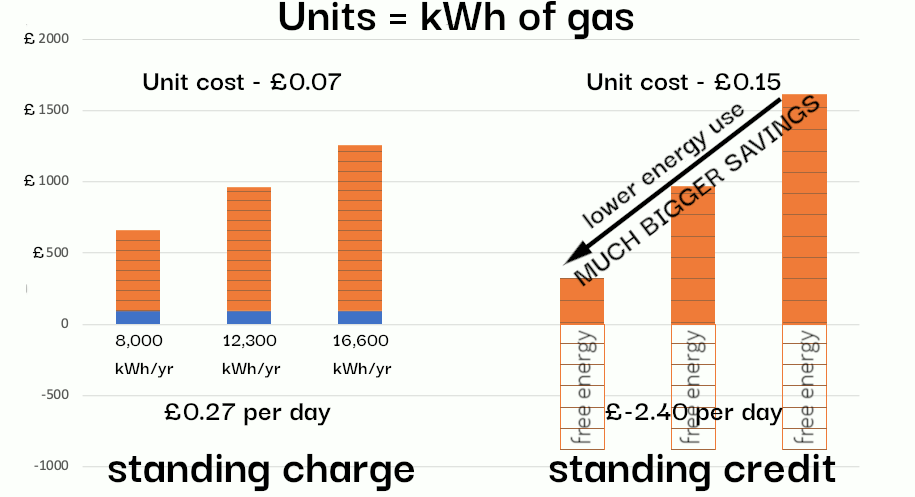Harm of Standing Charges
Have you ever tried to save energy, only to discover it doesn't make much difference to your bills? It's one of the fundamental unfairnesses of the standing charge on your utility bills. The more energy you save, the less effect it has on your bills, thanks to the standing charge. It's a charge designed to make sure all accounts make profit, so low energy users don't become 'undesirable' customers. But it means that the owner of a mansion pays the same standing charges as a tenant in a bedsit who uses a fraction of the energy. But there's another problem...
The standing charge stands in the way of energy efficiency

Standing charges block energy efficiency by driving up payback time
UK homes are amongst the coldest and draughtiest in Europe. Governments have failed to deal with the
17% of the UK's carbon emissions
Failure to reduce homes carbon emissions since 1990.
Residential sector emissions (red line) fell by only 19%, compared to 42% reductions achieved by the Commercial & Public sectors (orange line) during the same period.
UK Carbon Emissions by sector (in MtCO2e)
Source: GOV.UK
caused by heating poorly-insulated homes. They have failed to provide proper motivation for households to take energy efficiency seriously.
Energy upgrades can be very expensive, and long-term cost is a key factor in people's decisions ... how much money will it save? The answer is 'Not as much as you'd hoped', because the standing charge reduces the rewards of saving energy. The result is that it takes longer to pay for itself, so those big investment - in insulation, heat pumps, solar panels etc. - become harder to justify.
REVERSING the standing charge could STIMULATE INVESTMENT
If standing charge deters investment, could the situation be reversed to stimulate homes to invest in energy efficiency? Instead of a standing charge, could a standing credit be the answer?



